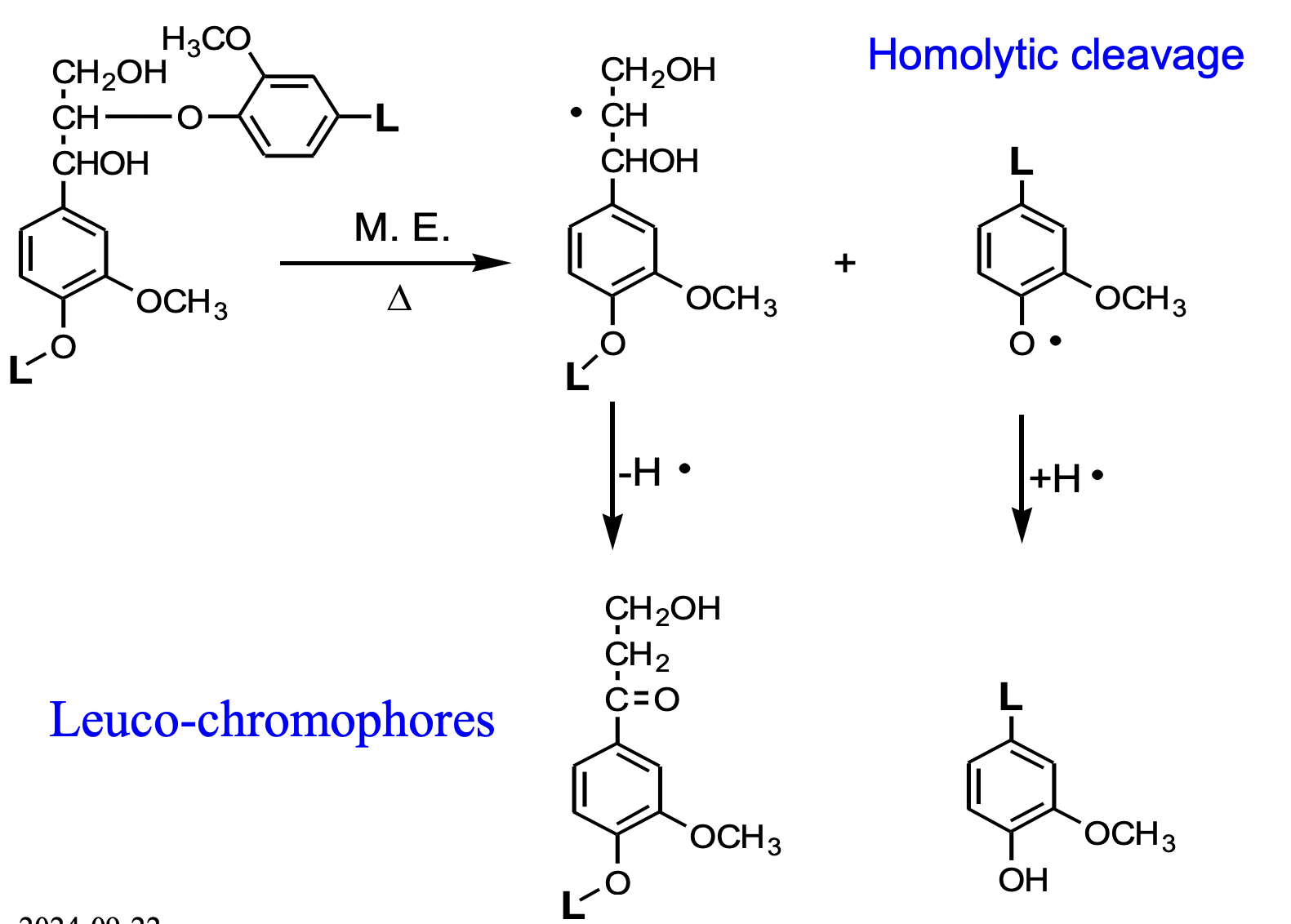Mechanical pulping föreläsning 8 (Module 4: Pulping and processing)
1/13
There's no tags or description
Looks like no tags are added yet.
Name | Mastery | Learn | Test | Matching | Spaced |
|---|
No study sessions yet.
14 Terms
Why is mechanical pulp called “high-yield pulp”?
Becauce it remain most of the woods components including all lignin in the tree.
What differ CTMP from TMP?
TMP (Thermomechanical pulp) use steam as pretreatment for wood chips before refining. CTMP (Chemomechanical pulp) use steam and chemicals such as sulphites as chemical pretreatment for wood chips before refining.
Why do mechanical pulp have low brightness and weaker fibers?
Ligninet is kept (dyes) and mechanical energy damage the fibers.
What is chromophores?
Chromophores is created by oxidized lignin. Theyre coloured which leads to decreased brightness of the pulp.
Name 3 factors that affect the brightness of mechanical pulp
The natural color of the tree
Amount of metal ions (they catalyze oxidation of lignin)
Amount of extractives
What is the difference between chromophores and leucochromophores?
Chromophorer are already coloured, leucochromophores are uncolored but can be oxidized to form chromophores (and therefore become colorized)
What is “Latency”?
Letency is compressed and twisted fibers that occurs during the TMP and CTMP methods. Latency can be removed by agitation at low temperatures.
What happens chemically with lignin during mechanical wood refining?
Homolytic cleavage ——> formation of radicals ———> chemical reaction with radicals that leads to the formation of Leucochromophores.

What is the purpose of sulfonation in the CTMP-process?
To brighten up the lignin by reaction with chromophores and decrease the latency (increase fiber separation)
How does ditionite work during reductive bleaching of mechanical pulp?
It reduce quinones and carbonyl groups to colourless hydroquinones.
Name 1 disadvantage and 1 advantage with hydrogen peroxide during oxidative bleaching.
Advantage: oxidation with Hydrogen peroxide gives higher brightness than reductive bleaching with ditionite.
Disadvantage: Unstable, reacts with transition metal ions
Why does the pH value decrease during hydrogen peroxide bleaching?
Acids is created from oxidized hemicelluloses and lignin
What is photoyellowing in mehanical pulp?
It is yellowing occured by exposure to light that induce oxidation of lignin.
How can yellowing of mechanical pulp be prevented?
UV-protection, paper fillers